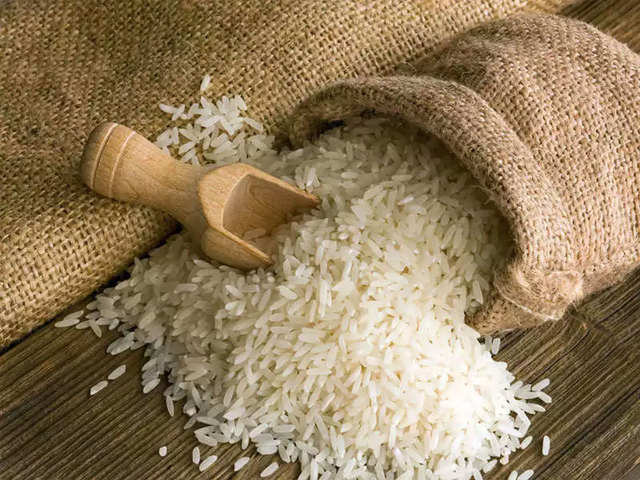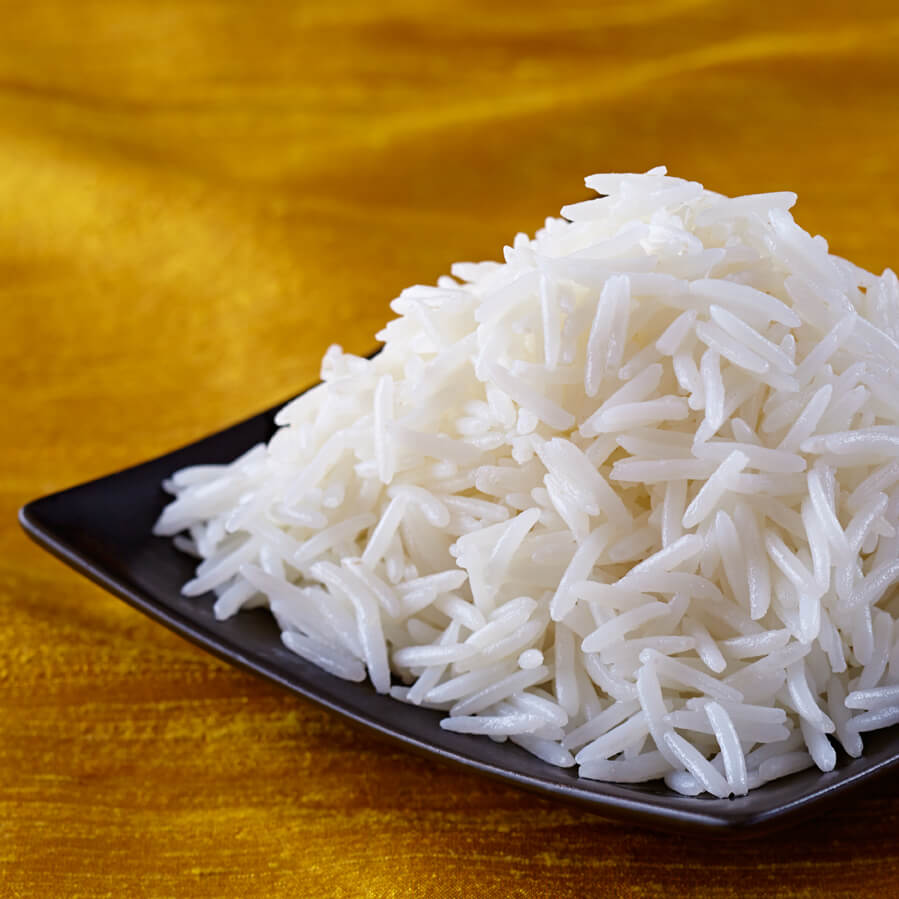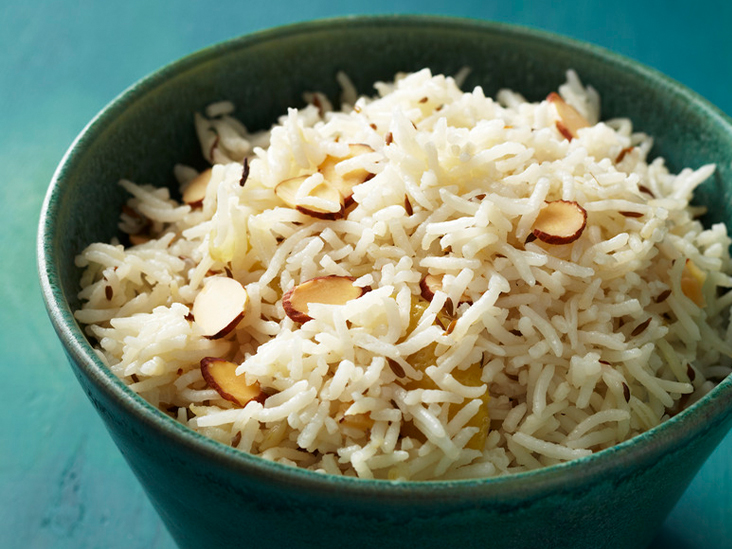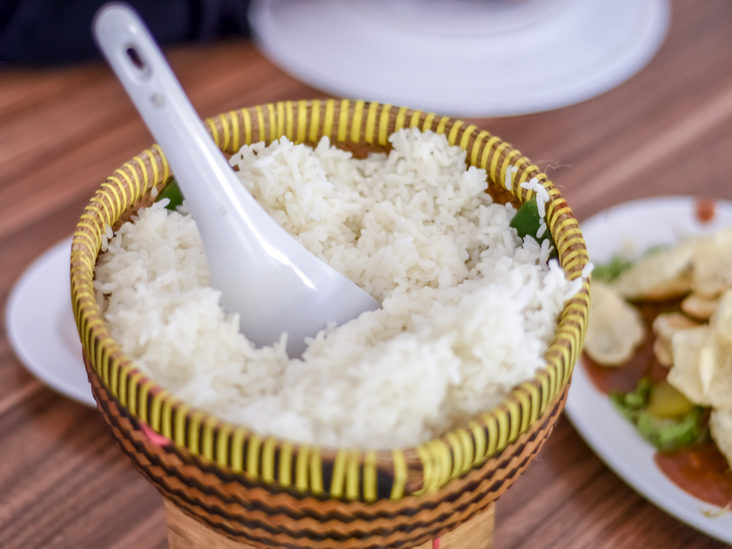What Is The Difference Between Basmati Rice And Jasmine Rice?

It is essential to understand the differences between basmati and jasmine rice if you must choose between the two varieties of rice. Both of these rice types are tasty and may be used in various ways. However, some cuisines demand a specific sort of rice.
The main distinction between basmati and jasmine rice is flavor. Basmati rice has a nutty, flowery flavor, but jasmine rice is nutty, and many people say it tastes like popcorn. However, there are some additional distinctions and commonalities between these two rice varieties that we will go over in more detail later on, so stay tuned.
Which is the better option? Basmati or Jasmine Rice?
Your choice of rice will ultimately be determined by your tastes as well as the meal you’re preparing. You’ll also note that different recipes require various varieties of rice. Let’s look at both rice varieties and see how they differ to determine which one you like.
Basmati Rice

Basmati rice is only found in India and neighboring nations like Nepal and Pakistan. It has a strong flavor and is used in various traditional Indian recipes. In Hindi, the word basmati means fragrant rice. You’ll understand why this rice is such a popular ingredient as soon as you taste its nutty but flowery flavor. You may use this long-grain rice in various recipes, even ones that aren’t often associated with Indian cuisine, so get creative.
Jasmine Rice

Thai food is known for its jasmine rice. You may find this sort of rice in both Cambodian and Vietnamese recipes. It has a similar fragrance to basmati rice but a somewhat distinct flavor. You won’t get the flowery flavor, but you will get a more nutty flavor.
Also, jasmine rice has a shorter grain and is stickier than basmati rice, a less evident distinction between the two. Both white and brown jasmine and basmati rice are available. The white variants are more widely utilized since they are simpler. As a result, you may choose the type that best suits your recipe.
However, there are no noticeable changes in flavor between white basmati rice and brown basmati rice or between white and brown jasmine rice. While you may select between basmati and jasmine rice based on your preferences, each variety complements different recipes. Basmati rice, for example, is ideal for curry meals and other Indian cuisines such as stir-fries. On the other hand, Thai recipes with shrimp or other seafood will benefit significantly from jasmine rice.
Is Basmati Rice Better Than Jasmine Rice for Health?
There are no significant variations in health advantages between these two forms of rice. They both have a low-fat content, making them healthier than other forms of rice. They also include a certain quantity of protein, which can improve the nutritional value of your meals.
However, there is a health difference between these two forms of rice that you should consider if you have diabetes or are cooking a meal for someone with diabetes that calls for one of these rice types. In this scenario, basmati rice is preferable since it has less sugar.
The glycemic index of basmati rice is 59, whereas that of jasmine rice is 89. For people with diabetes, this can be a substantial difference, and you should consider it when choosing one variety of rice over the other. Even if you don’t have diabetes, it’s vital to know that both basmati and jasmine rice are nutritious, and they’re sometimes mistaken for other rice varieties in many cuisines.
Is Basmati Rice a Good Substitute for Jasmine Rice?

These two rice kinds are distinct and somewhat similar, which is why you’ll find that you may use them interchangeably in some meals. They are both fragrant and will enhance the flavor of your cuisine. If you use basmati rice instead of jasmine rice, you may leave the rest of the ingredients the same.
Your dish won’t have much of a difference in flavor. The texture, on the other hand, can be different. Remember that jasmine rice is stickier than basmati rice, which may alter the appearance of your dish. If this difference doesn’t concern you, you can use basmati rice instead of jasmine rice whenever you need it.
The rice’s flavor will change as well, but in such a way that it may go unnoticed. If you’re particular about tastes, you’ll notice that the jasmine lacks the flowery flavor of basmati while being stronger in terms of nutty flavor.
Basmati vs. Jasmine Rice Cooking Time
There are particular distinctions between jasmine rice and basmati rice in terms of cooking time that we’ll have to discuss. When it comes to jasmine rice, you want the sticky texture to shine through in your meal. You must first rinse your rice to eliminate any excess starch to accomplish this.
Drain thoroughly and simmer for about 20 minutes, or until the rice has absorbed all of the liquid. You’ll need 1 cup of rice and 1.5 cups of water to get the sticky texture in terms of water. Before cooking basmati rice, soak it in water for at least 30 minutes and up to 45 minutes. This will give the rice the moisture to taste better and cook evenly. After that, rinse it and boil it with 3 cups of water for every 2 cups of rice.
Cooking time is around 15-20 minutes. Regardless of the rice you choose, add spices of your choice to the rice water. Turmeric is an excellent choice since it gives the rice a gorgeous golden color and a unique earthy flavor. You may also use saffron or paprika, depending on your preferences.
Conclusion

In most meals, both basmati and jasmine rice will taste wonderful. They are best utilized for basmati rice in Indian cuisine and jasmine rice in Thai cuisine. This isn’t to say you shouldn’t use them for other recipes you enjoy.
These rice varieties are among the most flavorful on the market, and they’re also simple to prepare and season. If you want to end up with excellent cuisine that everyone will enjoy, follow your recipe and the other components, regardless of the sort of rice you choose.











